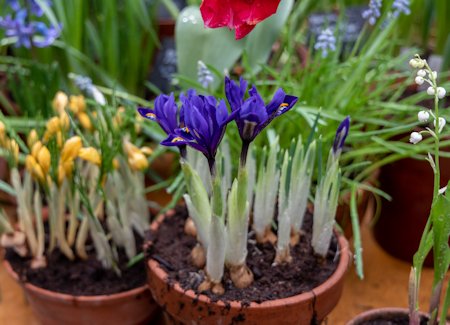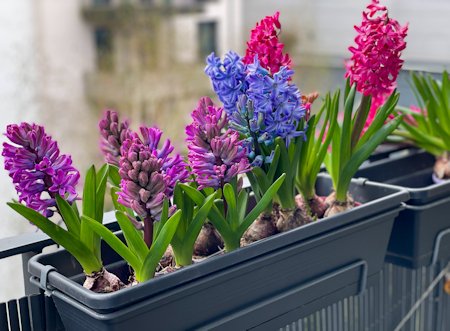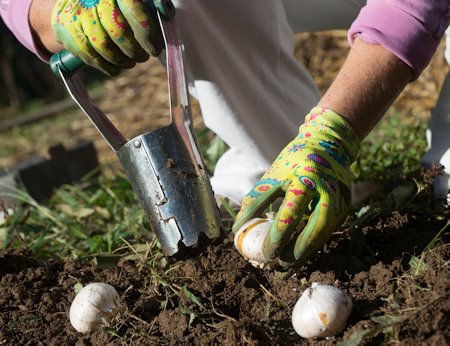Everything you need to know about choosing and planting bulbs
Little pops of colour
Bulbs are easy to grow and maintain, plus they provide delicate pops of colour throughout the seasons. Plant in borders or pots and wait for the colour to start peeping through next season!
Different types of bulbs
Spring flowering bulbs
Daffodils, crocus, tulips, hyacinth and alliums.
Plant them in the autumn and early winter - tulips can be planted as late as November.
Watch them flower in spring, from February to May.
Summer flowering bulbs
Begonias, lilies, dahlias and gladioli.
Plant them in late winter and early spring.
They will flower in summer, from May to August.
Autumn and winter flowering bulbs
Winter daffodils (Stenbergia), Bowden lily (Nerine), cyclamen and autumn crocus (Colchicum).
Plant them in late summer.
They flower in autumn, from September to October.

Choosing bulbs
Bulbs can be planted virtually anywhere, in beds and borders, in your garden, or in pots, containers and hanging baskets on balconies and patios.
Here are some bulb planting ideas:
Strategically position pots framing a view or either side of your front door.
Plant in a window box on your windowsill or balcony.
Weave bulbs through your borders to get a splash of flowers the following season.
How to plant bulbs
You can use a long or short handled trowel, but why not try a purpose-made bulb planter? It’ll make a hole that’s exactly the right depth for the bulb.
1. Make a hole in your soil or compost that’s about 3 times the length of your bulb.
2. Pop your bulb in and cover it with your soil or compost and firm it down.
3. That’s it!
 When planting in lawns, it’s easier to use a bulb planter. Push your bulb planter in, turn and lift. This will remove a plug of turf and soil. Pop the bulb in and place the plug of earth on top of it.
When planting in lawns, it’s easier to use a bulb planter. Push your bulb planter in, turn and lift. This will remove a plug of turf and soil. Pop the bulb in and place the plug of earth on top of it.
Discover our range of digging tools online.
How to grow bulbs in wet soil
Although they’re resilient, most bulbs won’t grow well in badly drained soil and can occasionally rot if the soil is too heavy.
To improve your soil's drainage, dig in lots of coarse/sharp sand or horticultural grit or add an organic material like compost or manure.
And there you have it - our guide to all thing bulbs!
Have a question? Our helpful staff in store can assist you and show you where to find our collection of bulbs, tools and more.
Don’t forget to check out our online selection which can be purchased for home delivery or click and collect at your local store.








